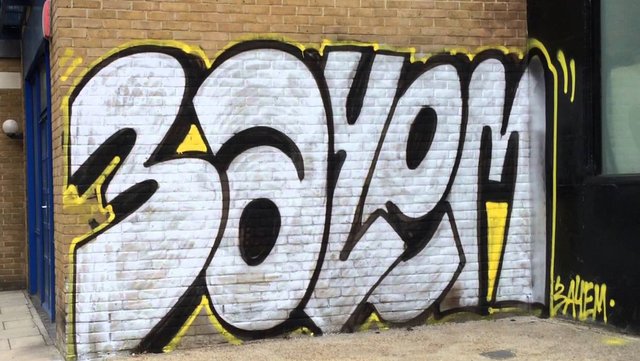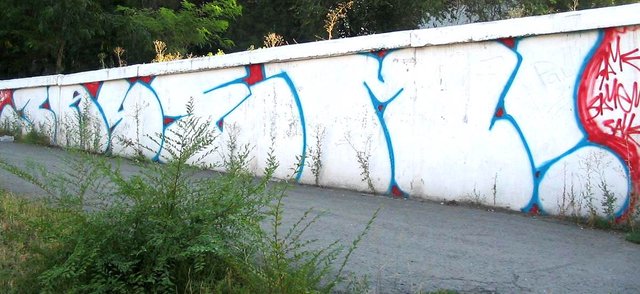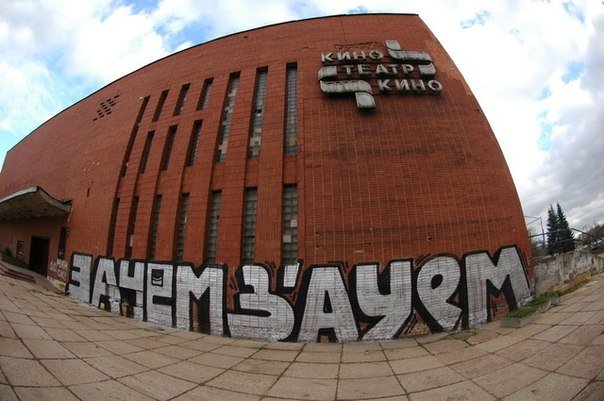Sometimes you go to work in the morning on a crowded dirty street, you hate your city, yourself, your work and those who hurry to the service with you. And suddenly on the wall you see a bright drawing - just letters or a smiling face. And immediately you feel something incomprehensible. Irritation? Dislike? Surprise?

So, a small picture on the wall, capable of causing passers-by a very different reaction, and is called graffiti. In Russia, this kind of creativity has existed for 10 years, but only recently it has been seriously taken into account by representatives of various artistic groups and power structures. To understand what graffiti is - vandalism or art, the guys from the most famous Moscow graffiti team "Why?" Will help us. Pose, Curl and Shuher.
What is graffiti?
Pose: We often intersected with various media outlets, gave interviews, explained everything in detail, and then read bullshit. Our ideas were so distorted that we learned to talk about graffiti without explaining what it is. You read the article. It's about graffiti, but really not.
Curl: If you say primitive, then graffiti is called a kind of painting, made in contrast to all the rest not on paper, but on walls, ceilings, asphalt - in a word, on planes that are not intended for it at all. Next, we need to divide the culture of graffiti into official and hooligan culture. The official refers to fashionable artists who sit at home, paint something on a vertical surface, then make popular exhibitions and collect money. Any normal graffiter will say that his art is rubbish. Although, perhaps, in 50 years we will all come to the same.

And what does the culture of graffiti include?
Shuher: It all started with African-American children in the US listening to rap, wearing broad pants and saying to each other: "Yo, man!". In foreign films of the 1990s their wall art is well represented.
Curl: It's easier now. Graffitters listen to what they like, wear what is practical and convenient. For example, for some time I went with a case, in a black coat, under which I had a robe smeared with paint. When I was drawing, I took off my coat, with a case stuffed with cylinders, blocked the picture from curious passers-by and "bombed" ...
Pose: It's good to be tall to "bomb" above all, and it's good to be small to successfully hide. And when you draw, for example, in blue, you wear only blue clothes, at home you have blue wallpapers and your girlfriend has blue hair. Or you "bomb" only the doors of expensive stores, because you do not like them. Then you are a real artist - with your culture, idea ...
What are "tags"?
Curl: "Tag" in literal translation means a stamp, and we have something like a signature. All novice artists who do not yet have the experience or talent to draw big "bombs" simply paint their name beautifully with a marker on the walls. More experienced graffitiers leave "tags" for their advancement. And for many other reasons.
Shuher: "Tagging" is an essential element of graffiti culture, which also exists as an independent direction of wall painting. For example, several years ago I covered my half of Moscow with my "tags". It happened that nice girls came to me in the companies and said that they knew me because they saw my "tag".

How do people look at what you are doing?
Curl: It's different. Some are admired. There have been cases that I was approached by some rich designers, invited to work, gave their business cards. In return, I gave them my stickers and sent them away. Art, as already mentioned, is not sold, especially to the rich.
Pose: Indeed, the cases were very different. Once we drew at night on an unused wall, and we were attacked by an alert passer-by walking his dog. "Bastards, what are you doing?" - he yelled and climbed in his bosom. We thought, the madman would pull out a knife or a pistol. And he took out a pack of salt and began to rush into us. We then laughed for a long time.
So, next part tomorrow, follow, upvote if you like this interview. Thanks for reading